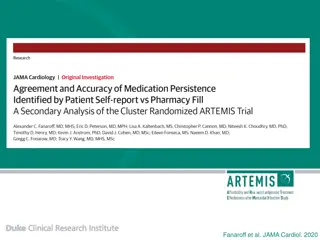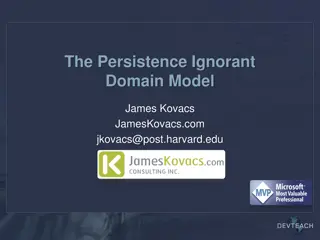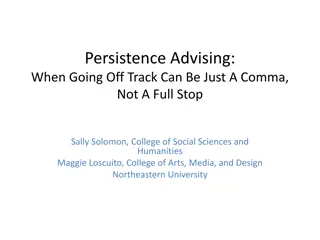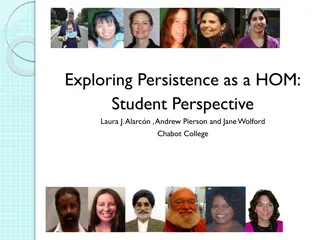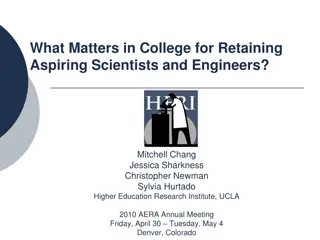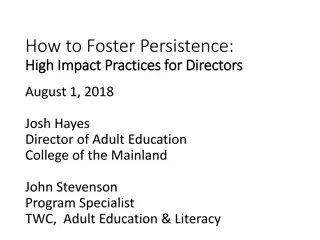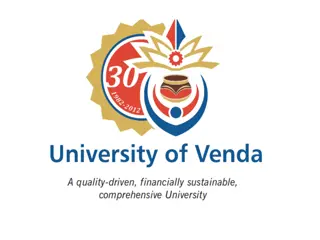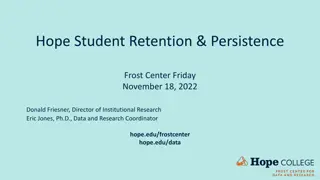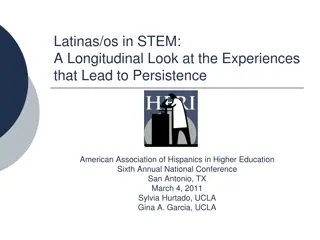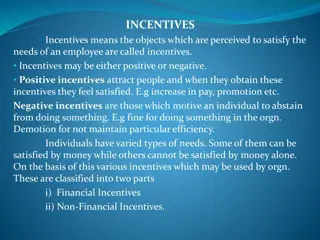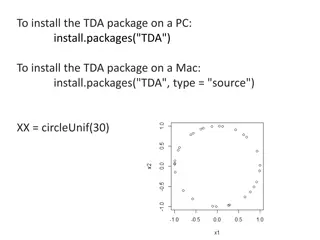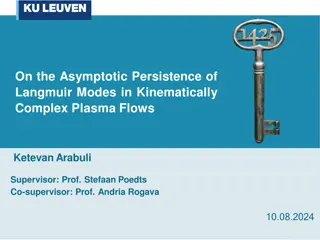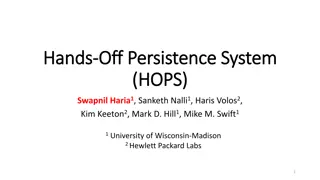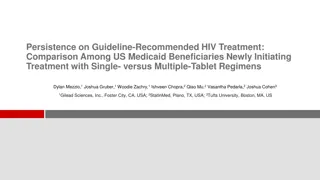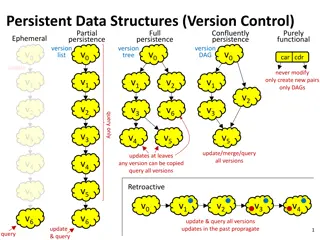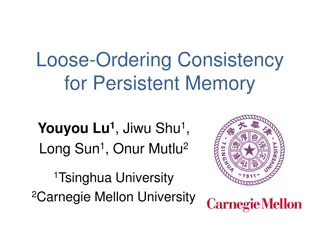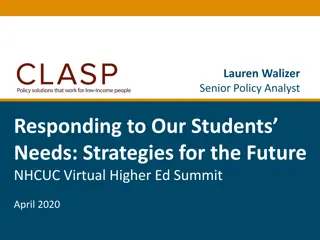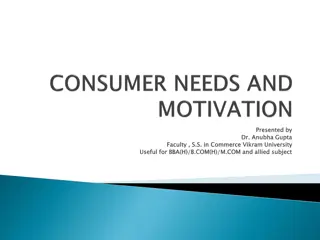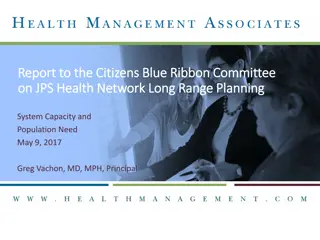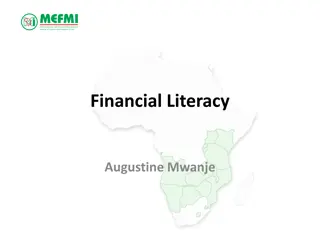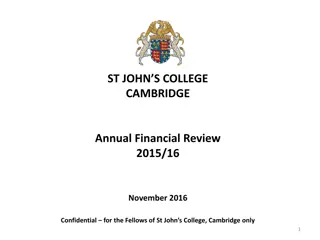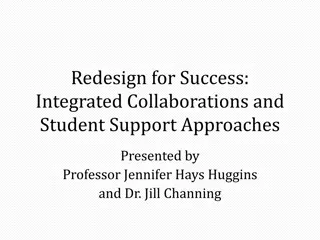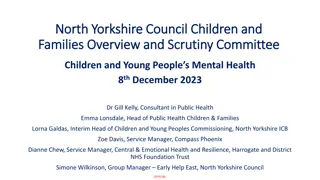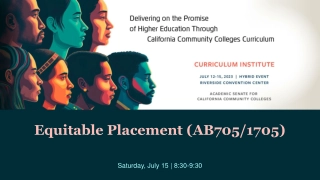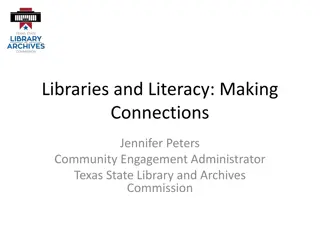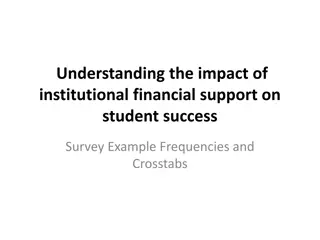The Impact of Unmet Financial Needs on First-Year Student Persistence
This study explores how unmet financial needs affect the persistence of first-year students in higher education institutions, particularly in South Africa. It discusses the challenges faced by students who lack adequate financial support and examines factors contributing to student retention. The research aims to determine the association between unmet financial aid and low persistence rates among first-year students.
Download Presentation

Please find below an Image/Link to download the presentation.
The content on the website is provided AS IS for your information and personal use only. It may not be sold, licensed, or shared on other websites without obtaining consent from the author. Download presentation by click this link. If you encounter any issues during the download, it is possible that the publisher has removed the file from their server.
E N D
Presentation Transcript
The effects of unmet financial needs on persistence among first year students. Thabang Kaneli and Mxolisi Masango Email: thabang.kaneli@wits.ac.za
Table of Contents 1 INTRODUCTION 2 METHODOLOGY 3 FINDINGS 4 CONCLUSION
1 INTRODUCTION 2 METHODOLOGY 3 FINDINGS 4 CONCLUSION
Background The South African higher education subscribes to a funding framework which distributes the cost of fees between the government and the students. The percentage of students with financial muscle have increased while the percentage of those who need financial aid has increased. The percentage of first year students dependent on NSFAS increased from 16% in 2016 to 46% in 2019. While funding from the state has increased it does not match the demand for student financial aid; there are still funding short-falls and the lack of funding continues to be a barrier to accessing higher education.
Literature According to Tinto s model of student attrition, family background, skills and abilities and prior schooling are the factors which contribute to the students ability to persist (Schreiber et al, 2014). Studies conducted in the USA which looked at persistence of students who received financial aid in comparison to those who did not have had conflicting findings (Brescian and Carson, 2004; Choitz and Reimherr, 2013). A study conducted in the UWC found that many of the students who left the institution prematurely were doing so because they would not afford to stay there (Leketsa et al, 2010).
Issues created by funding shortfalls Homelessness Traveling longdistances Food insecurity Having to work part-time
Aim To ascertain whether unmet financial aid need is associated with low persistence among first year students. Definition of terms The unmet need for financial aid is considered to be the money that the student has to pay out of pocket after financial aid has not been granted. Persistence, also known as student retention, is defined as the number of students who enroll in a study programme and are actively engaged in teaching and learning without discontinuing their studies in that year and proceed to the following year at the same institution (Sondlo, 2013).
1 INTRODUCTION 2 METHODOLOGY 3 FINDINGS 4 CONCLUSION
Biographical Questionnaire 2018 Student Financial data Student Enrolment data Data 2054 First time first year students who indicated they would be relying on NSFAS for tuition payment Sample size A descriptive analysis Bivariate hypothesis testing A logistic regression model Analysis plan
1 INTRODUCTION 2 METHODOLOGY 3 FINDINGS 4 CONCLUSION
FINANCIAL NEED FINANCIAL NEED Unmet Financial Need NSFAS Reliant 15% N=317 N=2054 40% PERSISTENCE PERSISTENCE Financial Need Met 47% 87% N=1737 88%
WHO ARE THERE STUDENTS? WHO ARE THERE STUDENTS? RACE BLACK= 86% GENDER 55% 45%
SECONDARY SCHOOL BACKGROUND SECONDARY SCHOOL BACKGROUND School Quintile Rural Urban Q1-3 = 45% RURAL = 26% Computer Use Library access No Computer use = 27% No Access = 38%
UNIVERSITY INFORMATION UNIVERSITY INFORMATION Accommodation First generation status Mode of transport Off Campus Private= 41% First gen = 63% Public transport = 47% University Residence= 32% Intention to work Working hours Distance travelled Intending to work= 28% More than 15 hrs.= 9% More than 30KM= 17%
Predictor variables Outcome variable Odds Ratios 0.14 ( Need unmet) Financial need Persistence Gender P-value < 0.05 0.49 (Males) 1.59 (4-5) 2.49 (Int/Pvt) Quintile
1 INTRODUCTION 2 METHODOLOGY 3 FINDINGS 4 CONCLUSION
Conclusion Conclusion 2 1 Students with an unmet need financial are 86% less likely to persist Student who are more likely to have an unmet financial need Black, male, first generation, from lower quintile school.
Recommendation Future studies Future studies 1 2 1 Provide alternate funding opportunities Students who did not get funding yet still came back to the institution Students who needed accommodation Academic performance and completion of students with unmet financial need Provided additional support such as food, computer skills and academic interventions


